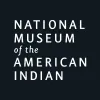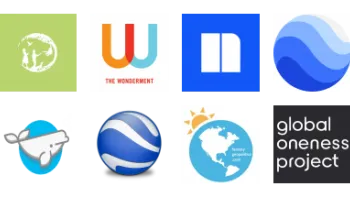Take a look inside 8 images
National Museum of the American Indian
Pros: Wide variety of mixed-media resources with useful filters. Lessons center Native perspectives, cultures, and histories.
Cons: Challenging to navigate. Requires modification for classrooms, especially for use in lower grades.
Bottom Line: This site is great for the planning phase and has excellent resources for bringing in Native perspectives and histories, but it will need some tweaking to fit well into classrooms.
Teachers can use this resource to include more primary resources and perspectives from Native American nations and cultures in their curriculum. The Collections search will be handy to find artifacts and resources to support classroom study or reading. Also, the Education section has an excellent Native Knowledge 360 database that has lessons and subsites that could provide focused study on topics and cultures. This section has a handy filter system for regions and nations, which can be helpful for educating students about the original nations, tribes, and peoples of their land. There are also featured collections that can be a helpful starting point. These resources could be supplemented with one of the scheduled virtual field trips. The field trips are free but require advanced registration.
In the fall, teachers may want to review the "American Indian Perspectives on Thanksgiving" content, or on Columbus Day use the curated activities for "Unlearning Columbus Day Myths." There are also resources for use outside of social studies -- for instance, a Spanish language class may discuss the "El Gran Camino Inka: ¿Cómo un sistema de carreteras puede ser un ejemplo de innovación?" digital lesson.
The National Museum of the American Indian is a website for physical museums located in New York and Washington, D.C. Users can view the museums' current and past exhibits, artifacts from the museums' collection, and a vast amount of other online-only educational resources, including downloadables, videos, and webinars. While materials are available for math, science, and art, most of the materials are geared toward secondary social studies and geography content.
The site has a few key sections. There's the Collections browse experience where users can search and filter for historical artifacts. The Exhibitions section includes curated, topical collections. The Education section has webinars and field trips but most importantly the Native Knowledge 360 database. This database has lessons and other supporting educational materials. These resources can be browsed by grade and subject as well as by topic, region, and Native nation. Resources are also organized by Essential Understandings that serve as conceptual standards for the museum, including topics like Time, Continuity, and Change or Power, Authority, and Governance.
To see how this tool works, watch our video overview of The National Museum of the American Indian.
The National Museum of the American Indian would be a great resource for history teachers looking to incorporate additional perspectives into a traditional textbook curriculum. The rich variety of Native voices from the past and present provide unique exposure for modern students. The filters in particular break down resources into unique topics connected with indigenous perspectives and concepts that will intrigue and engage teenagers. Standout resources undo damaging myths surrounding holidays like Thanksgiving and Columbus Day while honoring ancient, sustainable traditions and ways of life that are more necessary now than ever.
Teachers familiar with other Smithsonian museums and websites may find this resource to be lacking, however. The website is more difficult to browse and doesn't offer as many bells and whistles as other museums. For example, teachers cannot come to this website with a specific idea and find ready-to-go materials to be used the next day. Instead, they need to search through various sections of the website, download the lesson PDF, and then modify the content significantly to fit it into a standard class period. Content marked for the lower grades is also not well tuned to younger students and will require reworking. The videos also need a lot of supplements, because while they feature great discussions, they could use more reading material to support literacy. It'd be nice to see more plug-and-play resources as well as student-driven resources that students could explore independently.
















